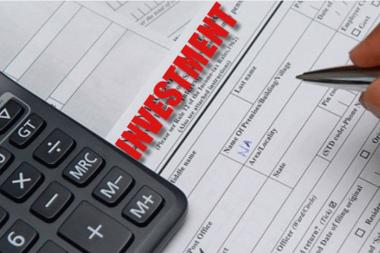Why You Should Never Forget to Submit Your Investment Declaration Form
 The first month of the new financial year is soon coming to an end, and all salaried employees would be eagerly waiting for their monthly payout. But if you did not submit your investment declaration form, your monthly salary slip can throw you off.
The first month of the new financial year is soon coming to an end, and all salaried employees would be eagerly waiting for their monthly payout. But if you did not submit your investment declaration form, your monthly salary slip can throw you off.
If you missed your investment declaration deadline, your employer would have over-calculated your tax liability and deduct the excess tax due from your salary for the following month. There is no reason to panic since you have time till 31 March 2020 to make the necessary investments for tax saving under Chapter VIA of the Income Tax Act, which includes the most commonly used Section 80C options, and claim a refund from the Income Tax department. But to avoid such a situation in future, let us understand why declaring investments are important.
What is an Investment Declaration Form?
An investment declaration form is a provisional statement that has details about your proposed investments and expenses that are income-tax deductible. At the end of the financial year, you need to provide supporting investment proofs for these investments that you have specified in the declaration form.
Why Employers ask for this information?
Employers ask for this information because they want to calculate your final taxable income (after deducting the tax saved through Section 80C investments, house rent allowance, home loan and medical bills). Based on this information, they can cut a constant amount of TDS (tax deducted at source) every month.
To calculate TDS, your employer considers the declared investments and expenses that are either tax-exempted, or eligible for tax deductions under the Income Tax Act. You need to submit both IT investment declaration form and investment proofs to your employer. If you do not submit the required investment proofs at the end of the financial year, either because you have actually not invested the money as required, or even though you had invested, you could not upload or submit the proofs to your employer, your employer will recalculate tax liability and will adjust the additional tax in the remaining months.
Employees need to ensure that they cover all the areas eligible for tax benefits in their investment declaration form. Just because it is called an investment declaration, does not mean it will only include the Rs 1.5 lakh deduction available under the Section 80C. Even the medical insurance premium paid by the employee will be covered and this comes under Section 80D. Similarly, if there is a donation made, this needs to be mentioned to get the tax benefit under Section 80G. Also, if you have an ongoing housing loan, for which you pay an equated monthly instalment (EMI), then both the interest as well as repayment of the capital should also be mentioned in the investment declaration form.
Still, if you missed submitting your investment declaration form altogether, you can still file your IT returns with the government before the 31 July deadline. You can declare your investments in your ITR and claim a refund for the extra tax deducted. However, this will involve a wait for some months for you to be able to get the excess tax deducted back in your bank account. Also, IT refunds are only processed once you file your ITR.
[“source=news18”]




